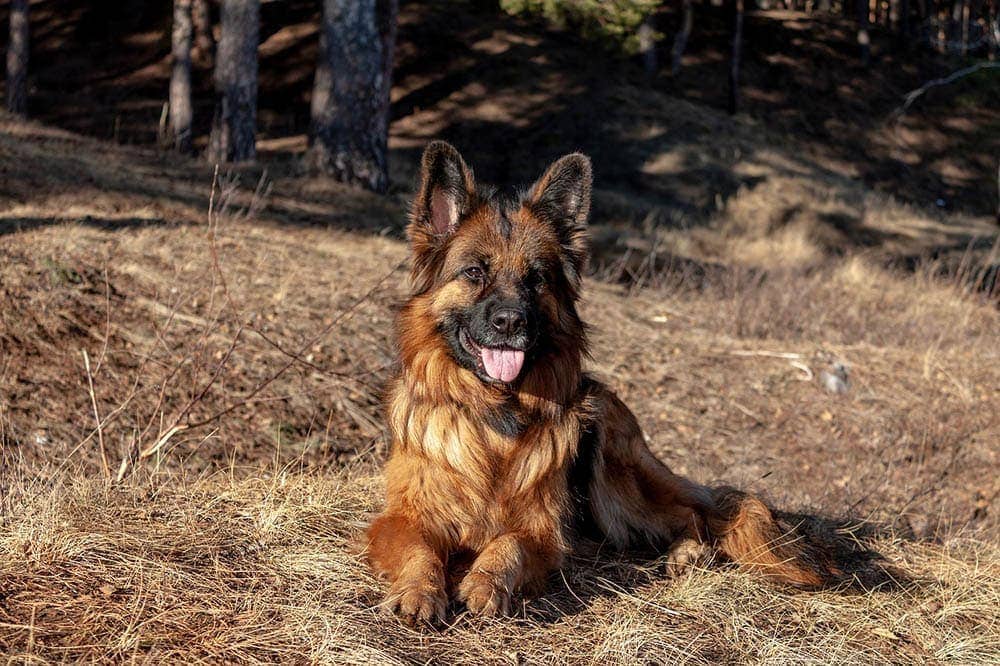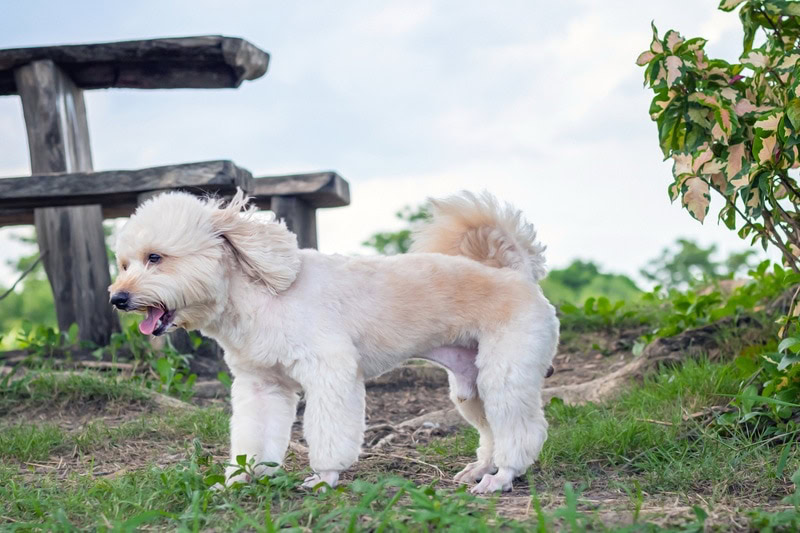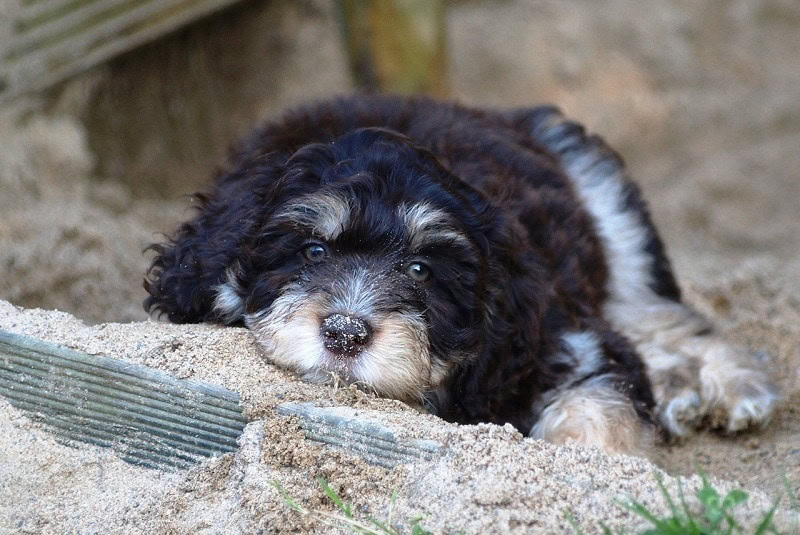CavaMalt (Cavalier King Charles Spaniel & Maltese Mix): Info, Pictures, Characteristics & Facts

Updated on
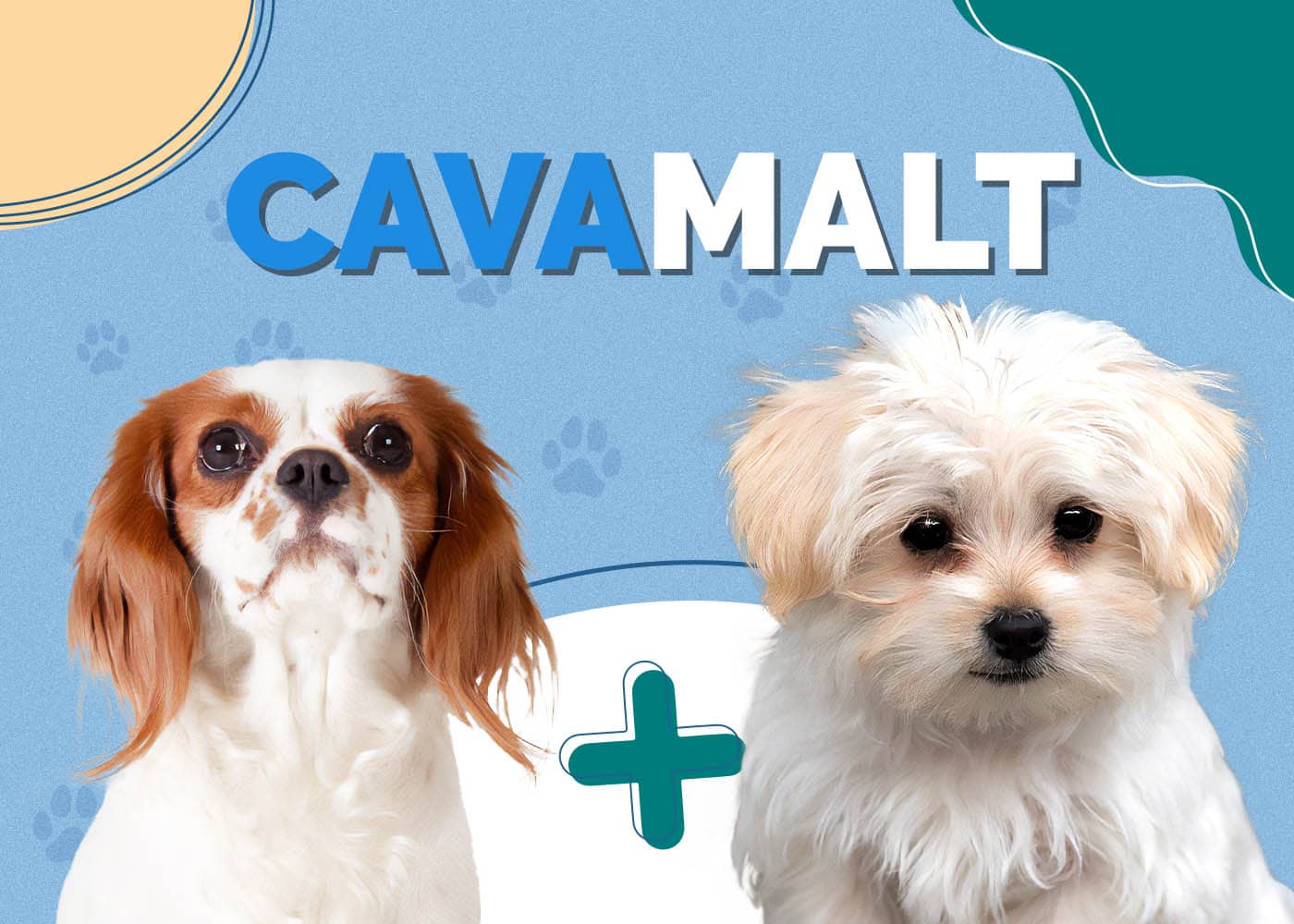
| Height: | 8–13 inches |
| Weight: | 8–18 pounds |
| Lifespan: | 12–15 years |
| Colors: | White, tan and white, black and white, red and white, tricolored |
| Suitable for: | Seniors, singles, individuals looking for a lapdog/companion, apartment living |
| Temperament: | Affectionate, sociable, intelligent, playful, docile, loyal, fearless |
Designer dog breeds are becoming more popular with new and unique hybrids being introduced every year. While most of the popular hybrids seem to be bigger-sized dogs, the demand for lapdog and companion crossbreeds is quickly rising. CavaMalts, also known as Cav-A-Malts or Maltaliers, are relatively new to the designer breed scene, but their small size and fluffy coats are stealing the hearts of dog lovers everywhere.
Whether you’re living in an apartment or you’re looking for an affectionate lapdog, CavaMalts are a great choice. Let’s take a closer look at what makes this lapdog a great companion:
 CavaMalt Puppies
CavaMalt Puppies
CavaMalts are new to the scene, but their newfound popularity has created a new demand. Adopting a CavaMalt is a great alternative but finding this exact mix in a shelter or rescue will be very difficult. Some breed-specific rescues may have mixed dogs as well, so we recommend looking through Cavalier and Maltese rescues if adopting is your first choice.
3 Little-Known Facts About the CavaMalt
1. CavaMalts can vary with coat types.
Since Maltese dogs have long, flowy coats that grow like human hair and Cavaliers have silky, soft short-haired coats that shed, CavaMalts can really vary with coat types. Most CavaMalts end up with a fluffy, soft mixture of both coat types, but some may have the shorthaired Cavalier coat instead.
2. CavaMalts are sometimes second-generation hybrids.
Although they’re still new, CavaMalts are not always first-generation hybrids and sometimes have CavaMalt parents! First-generation hybrids come from two purebred dogs, but some designer dog breeds have “established” generations for breeding.
3. CavaMalts can be vocal.
They may be tiny, but CavaMalts will make sure they’re heard. If left alone for too long or ignored, CavaMalts will bark until they’re satisfied. Excessive barking can be an issue with apartment living, so it’s crucial to exercise and train your puppy daily to reduce the amount of barking.
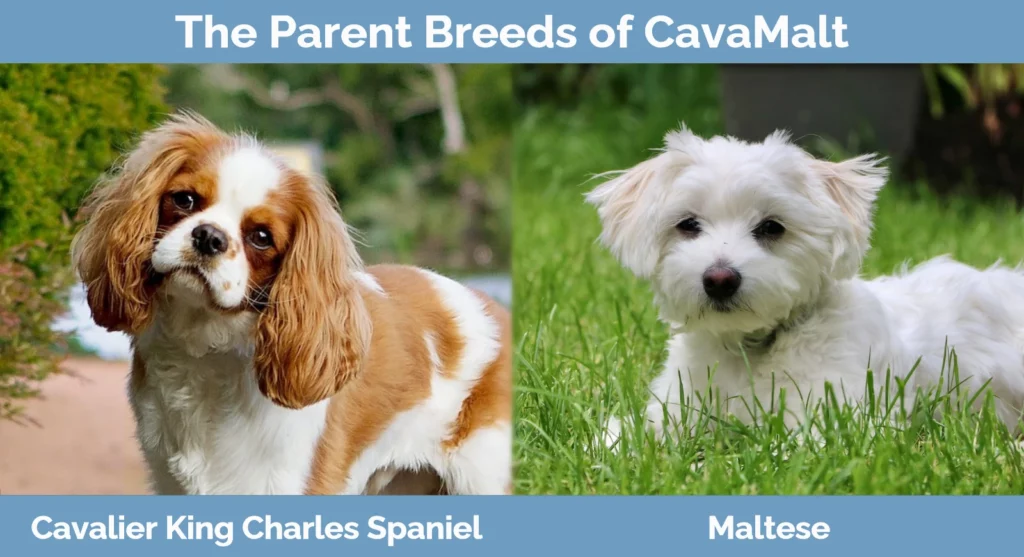
Temperament & Intelligence of CavaMalts
CavaMalts come from two breeds that were bred for companionship, so their temperaments are going to be similar to them. Companion dogs are lapdogs that enjoy the company of humans and bond quickly with their owners, which is an important part of owning these types of dogs. Let’s take a closer look at the temperaments of the Cavalier King Charles Spaniel and the Maltese dog to gain a better understanding of what your CavaMalt’s temperament might be.
Cavalier King Charles Spaniels are sweet-natured dogs originally bred for companionship, but they’re surprisingly more energetic than they seem. Naturally playful and social dogs, Cavaliers require a lot of human interaction daily in order to prevent boredom and anxiety disorders. Because of their easygoing personalities, Cavaliers are relatively easy to train and can excel in obedience competitions. They’re also quite athletic for being lapdogs, so they’re a great small dog breed for agility and other canine sports.
Maltese dogs are similar to Cavaliers in that they were bred for companionship, making them a top small dog breed of choice for many. Highly adaptable to most living environments, Maltese dogs are great for home bodies and families that are not gone from home for long periods of time. Although they’re trainable and do well with obedience, Maltese dogs are notoriously difficult to housebreak due to their small bladders. They can also bark excessively if they’re ignored for too long, which can be an issue for apartment living.
Are These Dogs Good for Families? 🏡
CavaMalts can be good family dogs, but their little bodies are fragile and prone to breaking. For this reason alone, we only recommend them for families with calmer, older children. This is NOT a breed that handles overly rough play, especially from young and hyperactive children who may not understand this. Another reason is that smaller dogs are prone to nipping and biting when being teased, which can still be traumatizing and painful.
Does This Breed Get Along with Other Pets?
Generally, CavaMalts do well with other dogs and can live in harmony with them. They do best when they’re raised with another dog, which will create a strong bond between the two. For small animals and cats, CavaMalts should be fine since they don’t have high prey drives. It’s best to introduce any new pets slowly to prevent territorial tendencies or fighting.
 Things to Know When Owning a CavaMalt:
Things to Know When Owning a CavaMalt:
Food & Diet Requirements 🦴
CavaMalts are small dogs that need specialized diets to support their daily activities, as well as specific nutrients to keep them healthy. We recommend a diet of at least 20% crude protein that has been fortified for small breeds. We also recommend mixing their diets with crunchy dry kibble to help keep their teeth and gums clean. For a more customized diet, consult with your veterinarian for more options.
Exercise 🐕
CavaMalts are medium-energy dogs that need some exercise and playtime, which is why they’re a great fit for many people. A few short, but brisk, walks a day and an hour of off-leash romping in an enclosed area should suffice, though your CavaMalt will have no problem asking for more. CavaMalts also need mental stimulation to keep them sharp and confident, so consider getting a few puzzle toys to entertain your puppy.
Training 🦮
Positive reinforcement training methods with a calm, but stern, voice is essential to keeping your CavaMalt motivated. These dogs are especially sensitive to harsh commands and rough handling, which will cause them to completely shut down. As long as you’re consistent with training and never show any impatience, your CavaMalt will pick up basic obedience with relative ease. Housetraining will be tricky since their bladders are tiny, so we recommend starting it right away.
Since your CavaMalt comes from two social breeds, a group puppy class can help socialize and train your new puppy. This will give them the socializing they need while also teaching you the basics of puppy obedience, which will be important if this is your first dog. If you’re struggling with obedience outside of the classes, we recommend hiring a professional dog trainer for a more personalized experience.
Grooming ✂️
Your CavaMalt’s grooming needs will depend on its coat type, especially if it has a longer coat like that of the Maltese. At a minimum, you should expect to brush out the coat once a week to prevent matting, though a more thorough coat care regime may be needed. If your CavaMalt’s coat grows out like the Maltese, a trip to the groomer’s once a month to trim the coat will also be needed. Your CavaMalt will also need its nails trimmed at least once a month or so, depending on its daily activity levels.
Lastly, consider starting a dental hygiene routine to prevent plaque buildup and dental decay in your Cavalier Maltese Mix.
- Also see: Best Dog Shampoos – Reviews & Top Picks
Health and Conditions 🏥
CavaMalts are still fairly new to the dog scene, so there isn’t enough information on any conditions they’re prone to. However, we can look at the parent breeds to get a better idea of what to expect. It’s crucial to save up for your CavaMalt’s future since some medical treatments can be outrageously expensive. Here are the most common health conditions of the Cavalier King Charles Spaniel and the Maltese:
- Mitral Valve Disease
- Heart Disease
- Patellar Luxation
- Syringomyelia
- Cataracts
- Allergies
- Dry/Sensitive Skin
- Patellar Luxation
- Dental Issues (tooth loss, gum issues, etc.)
- Hypothyroidism
- Hip Dysplasia
- Genetic Ear/Eye Conditions
 Conclusion
Conclusion
The Cavalier Maltese Mix is a true companion hybrid and lapdog, mostly known for their fluffy coats and happy demeanors. These sweet, small dogs are the ideal choice for most individuals, as well as apartment living and quieter senior homes. They’re naturally playful and crave daily interaction, especially from their favorite person. With a few quick walks and a little time off-leash, these happy lapdogs will love nothing more than to snuggle up on the couch.
If you’re looking for a companion-type dog that will demand a lot of your attention, the Cavalier Maltese Mix is a great choice.
Related Reads:
Featured Image Credit: Left: Cavalier King Charles (Hamsterfreund, Pixabay); Right: Maltese (Pezibear, Pixabay)
 CavaMalt Puppies
CavaMalt Puppies
 Things to Know When Owning a CavaMalt:
Things to Know When Owning a CavaMalt: Conclusion
Conclusion